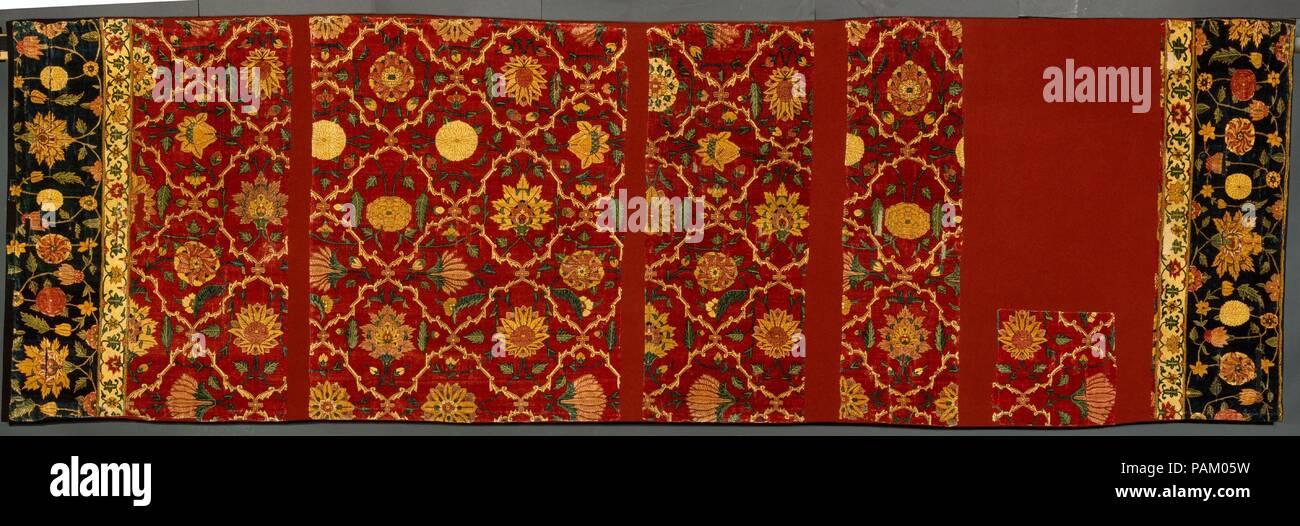Fragment. Dimensions: H. 14 3/4 in. (37.5 cm) W. 13 1/4 in. (33.7 cm). Date: ca. 1650. The original length of this carpet was an impressive thirty feet, indicating its use in a royal building for hosting audiences or other special occasions. Similar trellises enclosing blossoms were also painted on the walls and ceilings of such buildings, and floral friezes covered the dadoes and facades, creating a world of sumptuous flowers surrounding the emperor. Kashmir, with its pashmina shawlweaving tradition, is probably the source of pashmina carpets such as this, but workshops in Lahore also produ

Image details
Contributor:
Album / Alamy Stock PhotoImage ID:
PAM05WFile size:
22.1 MB (1.7 MB Compressed download)Releases:
Model - no | Property - noDo I need a release?Dimensions:
4800 x 1610 px | 40.6 x 13.6 cm | 16 x 5.4 inches | 300dpiPhotographer:
AlbumMore information:
This image could have imperfections as it’s either historical or reportage.
Fragment. Dimensions: H. 14 3/4 in. (37.5 cm) W. 13 1/4 in. (33.7 cm). Date: ca. 1650. The original length of this carpet was an impressive thirty feet, indicating its use in a royal building for hosting audiences or other special occasions. Similar trellises enclosing blossoms were also painted on the walls and ceilings of such buildings, and floral friezes covered the dadoes and facades, creating a world of sumptuous flowers surrounding the emperor. Kashmir, with its pashmina shawlweaving tradition, is probably the source of pashmina carpets such as this, but workshops in Lahore also produced many imperial-grade carpets in the mid-seventeenth century. Museum: Metropolitan Museum of Art, New York, USA.